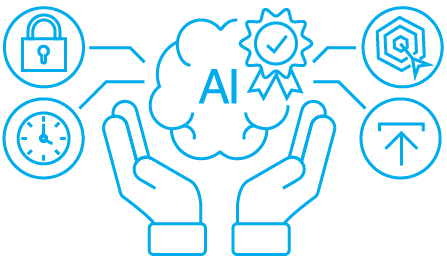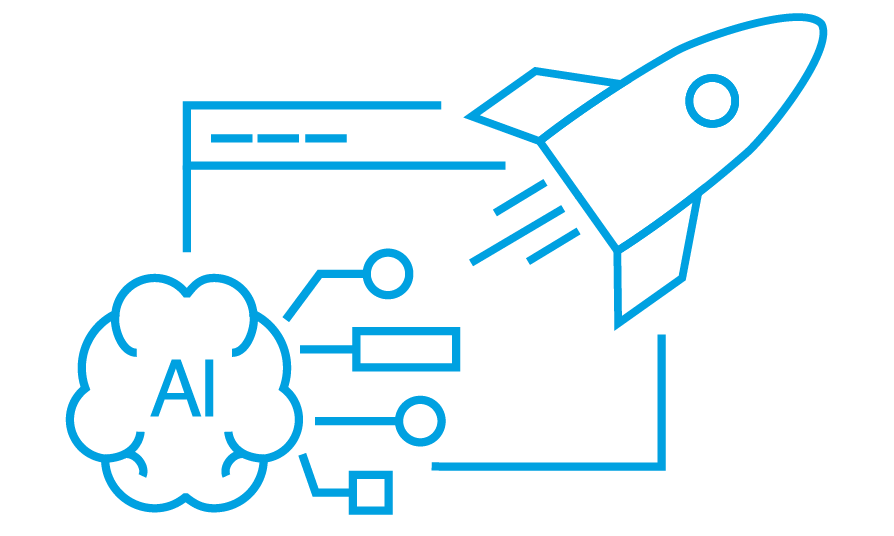- Raw data - definition
- Composition of raw data
- Raw Data - examples
- How can you use raw data?
- Audience Data Enrichment - how to easily personalize your ads
- First party data enrichment - how to know more about your customers
- From raw data to customer segments
- DMP and Raw Data: Case Study
Overview:
- Raw data – definition
- Composition of raw data
- How can you use raw data?
- Audience Data Enrichment – how to easily personalize your ads
- First party data enrichment – how to know more about your customers
- From raw data to customer segments
- Raw data and DMP: Case Study
We live in the age of machine learning technology, AI solutions, and digital information. Our digital world is full of raw, unstructured data and technologies that base on information are available to use for any marketing goal. As Forbes article says, “2.5 quintillion bytes of data flooding out online every day at our pace, but that pace is accelerating with the growth of the Internet.” So these quintillions of data must be organized and profitably used. Let’s take a look at what is raw data and how to effectively use it thanks to data technologies.
Raw data – definition
Raw data is a set of information that was delivered from a certain data entity to the data provider and hasn’t been processed yet by machine nor human. This information is gathered out of online sources to deliver deep insight into users’ online behavior. Thanks to this information marketers can easily create personalized online campaigns and reach target users with accurate message in the right time.
Worth to admit that raw data as is, without being processed by algorithms, isn’t very useful. Usually, it’s a bunch of code, like user cookie for example, which doesn’t bring much information, but when this data is integrated with appropriate user profiles, it is really helpful for marketers or business analysts. The integration is possible within the data provider, e.g, by using Data Management Platform (DMP).
DMP uses AI algorithms and to match raw data with 3rd party data profiles available on the platform. Various DMP providers offer different volume of data profiles, e.g. OnAudience.com DMP includes over 27 billions of user profiles. It is advised to have data scientists among your company staff to be able to fully receive the benefits that raw data gives.
Composition of raw data
Raw data is a source of information for Data Stream service, which we offer. This service was deployed to deliver data as a result of cross-functional cooperation of integrated marketing systems, such as Demand Side Platform (DSP), Supply Side Platform (SSP) and data provider (DMP). Read more about opportunities that Data Stream service can give your company.
Data Stream and raw data itself can be provided in various formats. In OnAudience.com it is available in four formats. Each has corresponding attributes, based on the chosen data to be received.
1. Data Point
Number of Data Point occurrences – it shows how many events, such as opening a website or clicking in specific link, was generated by users.
2. In Segment format encoded user ID and segment IDs are shared.
Included segments belong to the client and represent specific characteristics of web page visitor’s, like interests or demographic data.
3. Hybrid data
is a combo of both previous data formats but per particular Data Points. This data is more customizable, so it allows to get more precise information about users, like specific set of interests.
4. URLs
Is a set of information about particular URL that was visited.
Raw Data – examples
There are two types of provided raw data streams: Mobile Apps Data Stream and Desktop Data Stream. Both of them include digital information about users’ behavior and device. It is a great source for data scientists to build custom segments for targeting online campaigns or to make analysis based on audience data. See how the raw data looks like:
Desktop Data Stream
If you want to know more about user interests and purchase intentions, you can choose the desktop raw data stream with list of segments assigned to the user profile.
If you want to look deeper into user profiles, you can choose raw data with data points – here you can check users’ online activities and make your own big data analysis to assign profiles to segments of interests or intentions.
Mobile Apps Data Stream
Mobile Apps Data Stream is a raw data gathered from mobile apps. It will help you receive information about mobile users and target them in personalized campaigns. You can define what types of data are you looking for (e.g. sport apps users) and which attributes are the most important for you (e.g. frequently used apps).
How can you use raw data?
There are multiple areas, where raw data can be used. It’s a piece of good source information to be included in the planning stage of research, during prediction or to test on the final. The most popular fields are:
• Fraud detection & scoring

Raw data can be used as source data for an anti-fraud algorithm. For example, timestamp or amount of cookie occurrences or analysis of data points can be used within the scoring system to detect fraud or to make sure that a message receiver is not a bot (so-called Non-Human Traffic).
• Artificial Intelligence

Raw data can be treated as a train set and a test set during AI and machine learning algorithms building.
• Profiling & personalization

Raw data can be used for profiling & personalization to customize client profiles and divide them for segmentation, e.g., per gender or location (based on Data Point). The segments are used in precise targeting of online ads and sending clients personalized messages.
• Business Intelligence

Raw data is a source of information for BI systems, that helps to enrich user profiles with more detailed information, e.g., purchase path or geodata. This information is a good material for business analysis and predictive research.
• Targeting

Processed data by data scientists can help to improve online campaigns and reach the target audience.
• CRM Data Enrichment

Data can be integrated with the client’s CRM system. CRM integration provides a possibility to fill the gaps in user profiles with demographic data, interests or buying intentions. So, by enriching CRM systems, clients get a full view of their customers, which allows them to send highly personalized messages.
Audience Data Enrichment – how to easily personalize your ads
A stream of raw data can be used to enrich your company’s audience data. If you store just emails of current clients, you can mix your data with third-party data to know what your users like, what is interesting for them or which products they are going to buy. Audience enrichment process is completely anonymous, so you care about your users’ privacy.
What you can achieve with enriched data? We can mention here just a few main points:
- ads tailored to interests, purchase intentions, favourite brands, or demography
- precise recommendation system with fresh data about user’s behaviour
- improve up-selling and cross-selling activities
All types of audience data can be enriched, so if you own, e.g. a data marketplace, you can cooperate with a data provider, like OnAudience.com, to make your segments more detailed. It will help advertisers to find target groups they are looking for – they will be able to search target groups by new attributes. It will also help you to build new segments because you will discover what your audience is looking for online. Check what audience segments we provide:
First party data enrichment – how to know more about your customers
If you collect data from your own sources, such as websites and apps, you can extend knowledge about your current customers by external data. The first-party data enrichment process works the same as CRM data enrichment or audience data enrichment. Third-party data providers match audience data with your first-party data to discover new insights about customers from your database.
When you know more about your customers you can easily:
- create more personalized ads
- send them marketing messages tailored to current interests and behaviour
- build new segments and offer them for advertisers in PMP
First-party data is a great source of digital information about users. But to make your campaigns more effective and to find creative ways of attracting your customers’ attention, you need a little bit more info about your online users. Third-party raw data is a great way to get loads of additional info about your users.
From raw data to customer segments
You can create segments according to various factors, such as age, interests, gender, marital status or industry. In fact, you can treat raw data as a foundation for the segments. DMP platform allows to build segments with unique, custom attributes. It helps to deliver the right message to the right audience and improve the brand experience. Read more about customer segmentation and how to use custom segments.
DMP and Raw Data: Case Study
Data Management Platform is a platform where all data is being integrated. Dedicated pixel, created in DMP as a data point is licensing into publisher’s website, where attributes of particular visitors are stored on the platform. This is a part of the information that users’ profiles consist of and later used for creating segments.

When you combine a DMP with raw Data Stream you can create your own audience segments or build a new service that brings revenue. Web2Metrics – a company that provides solutions for call centers – developed a new product based on our raw data. The growth rate of the new revenue stream achieved up to 400% monthly. Read the case study of DMP and raw data here.



